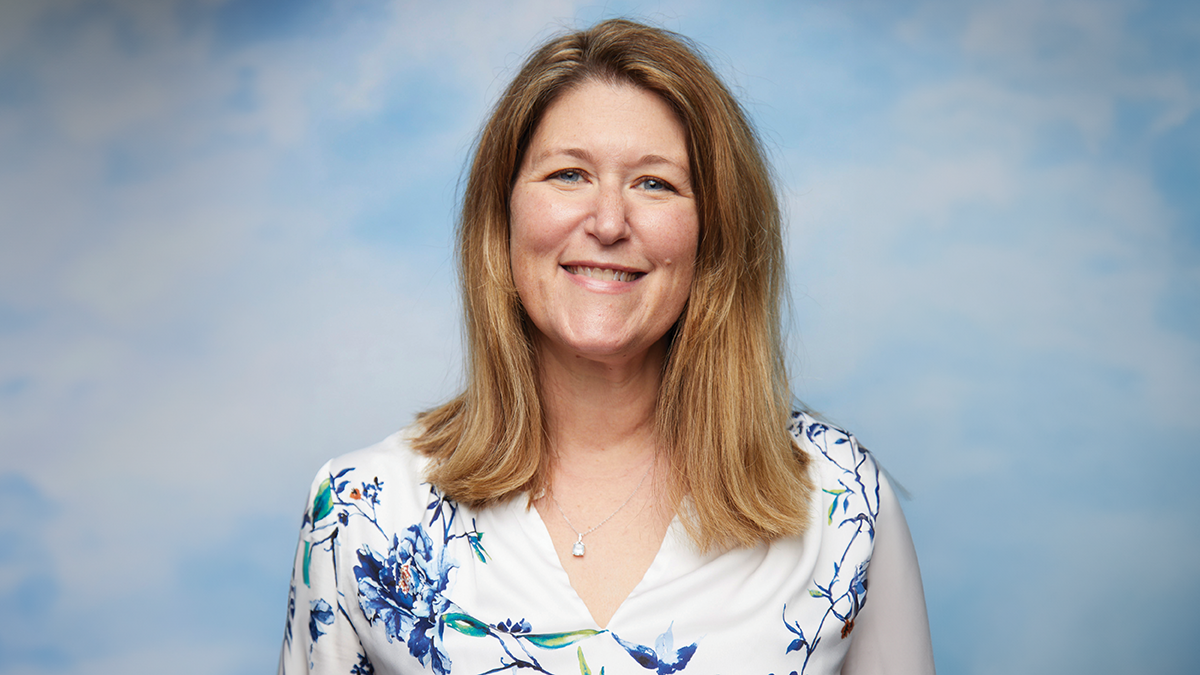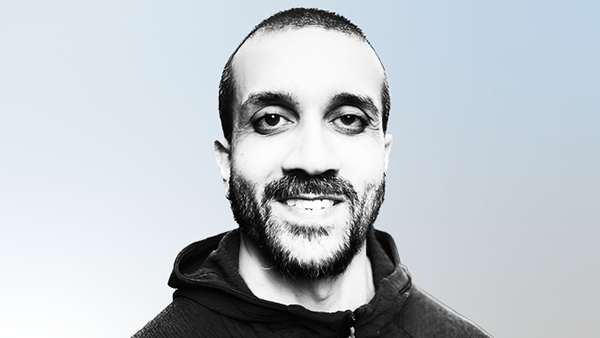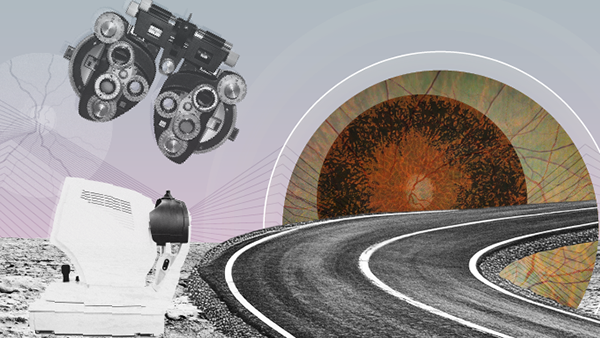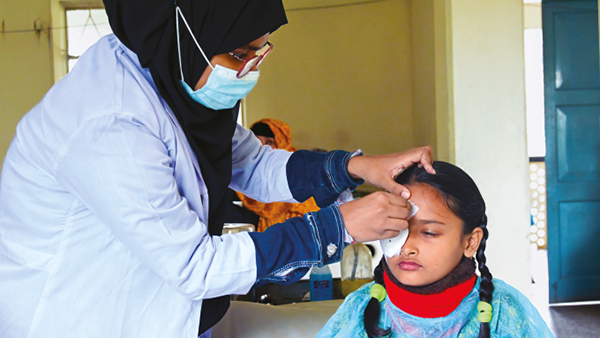Teaching Peers About Dry Eye Disease Boosts Patients’ Access to Care
My peers taught me about DED and how to build a specialty. Now, I’m paying it forward
When I started practicing, I wore contact lenses so I could better discuss them with patients, but I’d take them out as soon as I left work because my eyes felt terrible. Struggling with dry eye disease (DED) led me to research the condition and focus on helping patients get the care they need. Soon after, I decided to specialize in DED – and peer-to-peer education proved to be one of the key factors in my success. Today, I have a thriving DED clinic, and I love sharing information with my peers about new technologies, procedures, and techniques to help them get started. We’re all working together to ensure that more patients get the help they need to feel better.
What I gained from peer-to-peer education
I started out doing a lot of DED research on my own, but my journey really took off with peer-to-peer education. First, I attended conferences, such as Dry Eye University, where speakers covered the latest research. Next, I was thrilled to get an up-close look at DED clinics across the country. I spent a day in the clinics of W. Barry Lee at Eye Consultants of Atlanta, Josh Johnston at Georgia Eye Partners, and Art Epstein at the Dry Eye Center of Arizona. At these practices, I was immersed in learning about real-world DED diagnosis, patient education, treatment, scheduling, and billing.
As I started building the dry eye clinic at my practice, I continued to learn every step of the way. In addition to attending conferences, listening to webinars and podcasts, reading and writing articles for optometric journals, I’ve gotten hands-on experience and implementation best practices from device manufacturers, and I’m always sharing with the DED professional network I’ve built. The multifactorial nature of DED – plus the ongoing development of new medications, products, and procedures for the condition – demands continuous learning and the constant honing of both my examination and treatment protocols.
Implementing my education
After peers showed me all the pieces I needed, I established a DED clinic that was ready to see patients from day one. Over time, my approach to DED has evolved to reflect my experience, as well as new research and technologies, but those initial teachings are still the clinic’s backbone.
My DED peers have continued to both teach and learn with me as my armamentarium evolved over the years. Diagnostically, I brought in a meibographer (Lipiscan, Johnson & Johnson) to evaluate the meibomian glands and track the effects of therapy, and I eventually got a meibographer that measures noninvasive tear break-up time (NITBUT) and tear meniscus height (Antares, Lumenis).
My first in-office treatments were Prokera amniotic membrane (BioTissue), which helps to heal and protect the ocular surface, and BlephEx (BlephEx), a microblepharoexfoliation device for blepharitis. Next, for thermal expression of the meibomian glands, I started with MiBoFlo (MiBo Medical), and grew to using LipiFlow (Johnson & Johnson) and TearCare (Sight Sciences) as patient volume and demands on my time increased.
Everything about the protocol changed in 2022, when I brought in OptiLIGHT (Lumenis), which effectively targets inflammation, the underlying cause of DED, and has a host of other benefits. My patients often have some combination of meibomian gland dysfunction (MGD), demodex, excessive bacterial load, and an inflammatory condition like rosacea. I think of OptiLIGHT as the “perfect storm” because it can address all of these things—inflammation, MGD, demodex (1–2) – making it very effective for a wide range of cases. Today, it is the foundation of DED management in my clinic.
This year, I am incorporating OptiPLUS (Lumenis), a new dual-frequency radiofrequency device that may be used as a complement to OptiLIGHT. OptiPLUS targets the meibomian glands with heat, helping improve the number of expressible glands and boost meibum clarity (4, 5). My patients are getting great results with this pairing. In fact, these in-office treatments have greatly reduced the need for other therapies.
I am a big advocate of both prevention of dry eye disease risk factors, so I love providing my patients with products and tips to promote ocular wellness. I give patients an Eye Care Essentials kit containing artificial tears, lid and lash cleanser, a warm compress, and an omega nutraceutical to help them produce healthy tears. I make recommendations for other products that we may not carry in the office and provide an easy way for them to order.
Prescription medications are also a big part of the treatment algorithm, including immunomodulator eye drops, such as cyclosporine (Cequa, Sun Ophthalmics; Restasis, Allergan) and lifitegrast (Xiidra, Novartis). Also, I have enjoyed adding newer DED prescriptions therapies to my ever-evolving treatment regimen, including Eysuvis (Alcon), Tyrvaya (Viatris), Miebo (B+L), Xdemvy (Tarsus), and Vevye (Harrow). There are so many opportunities to continue learning and growing in ocular surface disease as there are even more new medications in the pipeline.
Being at the forefront of DED technology is great for my patients and great for me – I thrive in this environment. I’m continually fine-tuning my treatment protocols to get to the root cause of a patient’s DED, and that approach has allowed me to continually improve their outcomes.
Becoming a peer educator
Not every doctor is as excited about DED as I am, and I’m happy to be the one who learns everything and distills it into peer-to-peer education for others. It feels good to give back the same kind of help that I received initially and continue to receive with new technology.
My first job as an educator was showing the other doctors in my practice about how the new technology would help us manage DED. As I brought in new technologies, learned new procedures, and honed my techniques, I found that I loved sharing my tips and clinical pearls to help doctors deliver top-tier care for DED without starting from scratch. I began lecturing at conferences like SECO and the American Academy of Optometry (AAO) and offering webinars through Eyes on Eye Care and device, product, and pharmaceutical companies.
I also interact with many doctors through my dry eye blog, and they reach out to me through social media and email. This year, I am curating the ocular surface disease portion of an event called Eyewear Artwalk. It has two sides to the event: education and hands-on learning for eye care practitioners and their staff, as well as direct to consumer interaction and education. The event is traveling to seven cities across the nation.
Many other doctors offer peer-to-peer education, delivering messages consistent with my own about the pathology of DED, how to recognize it, and how to treat it. This consistent messaging from peers is producing a paradigm shift in the field, where more doctors now understand DED and feel confident about choosing the right treatment plan. If you want to learn more or start your own DED clinic, start by reaching out to your peers.
References
- R Liu et al., “Analysis of Cytokine Levels in Tears and Clinical Correlations After Intense Pulsed Light Treating Meibomian Gland Dysfunction,” Am J Ophthalmol., 183, 81 (2017). PMID: 28887117.
- Y Yin et al., “Changes in the Meibomian Gland After Exposure to Intense Pulsed Light in Meibomian Gland Dysfunction (MGD) Patients,” Curr Eye Res., 43, 308 (2018). Epub 2017 Dec 4. PMID: 29199865.
- VG Prieto et al., “Effects of intense pulsed light on sun-damaged human skin, routine, and ultrastructural analysis,” Lasers Surg Med., 30, 82 (2002). PMID: 11870785.
- J Chelnis et al., “Combined with Intense Pulsed Light Improves Signs and Symptoms of Dry Eye Disease Due to Meibomian Gland Dysfunction,” Clin Ophthalmol.,17, 3089 (2023). PMID: 33299295.
- RM Javate et al., “Nonablative 4-MHz dual radiofrequency wand rejuvenation treatment for periorbital rhytides and midface laxity,” Ophthalmic Plast Reconstr Surg., 27, 180 (2011). PMID: 21283035.
The New Optometrist Newsletter
Permission Statement
By opting-in, you agree to receive email communications from The New Optometrist. You will stay up-to-date with optometry content, news, events and sponsors information.
You can view our privacy policy here
Most Popular
Sign up to The New Optometrist Updates
Permission Statement
By opting-in, you agree to receive email communications from The New Optometrist. You will stay up-to-date with optometry content, news, events and sponsors information.
You can view our privacy policy here
Sign up to The New Optometrist Updates
Permission Statement
By opting-in, you agree to receive email communications from The New Optometrist. You will stay up-to-date with optometry content, news, events and sponsors information.
You can view our privacy policy here







